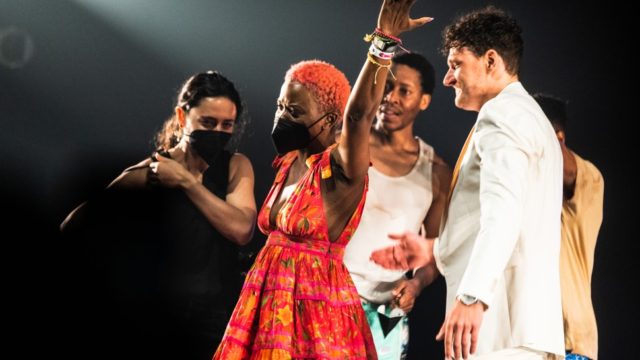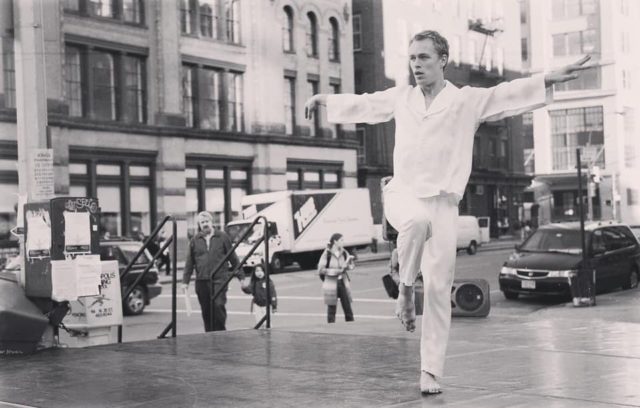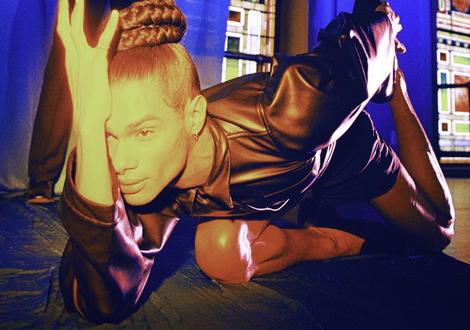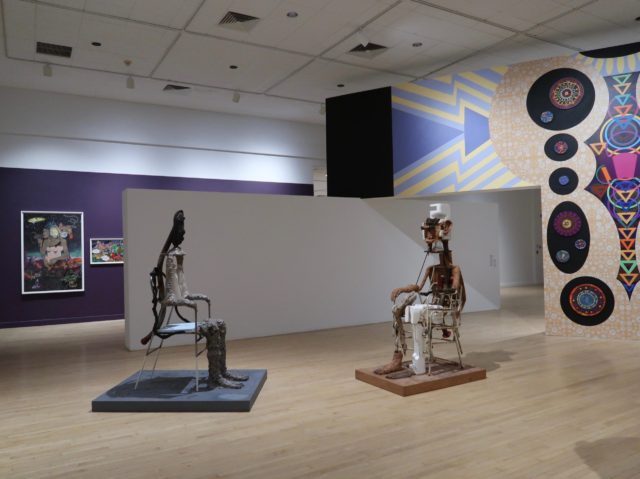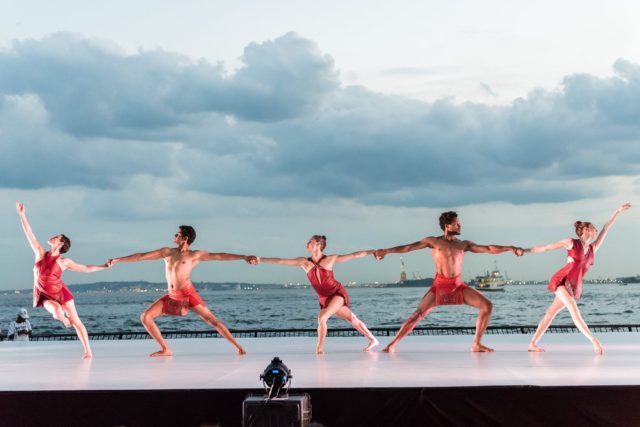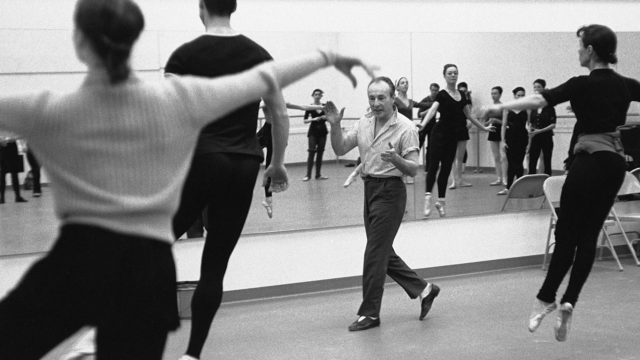
New documentary focuses on George Balanchine’s teaching methods (photo by Martha Swope)
IN BALANCHINE’S CLASSROOM (Connie Hochman, 2021)
Film Forum
209 West Houston St.
Opens Friday, September 17
212-727-8110
filmforum.org
This summer, dance fans have been treated to behind-the-scenes glimpses at the creative process of three legendary choreographers. First was Bill T. Jones in Rosalynde LeBlanc and Tom Hurwitz’s Can You Bring It: Bill T. Jones and D-Man in the Waters, followed by Alvin Ailey in Jamila Wignot’s Ailey. Now comes an exciting look at New York City Ballet cofounder George Balanchine in Connie Hochman’s In Balanchine’s Classroom, opening September 17 at Film Forum. Hochman, who trained at Balanchine’s School of American Ballet and danced with the Pennsylvania Ballet, has been working on the film since 2007, interviewing one hundred people who worked with Balanchine and gaining access to the archives of the George Balanchine Trust, incorporating rare, never-before-seen footage of Balanchine teaching his company in his unique style.
Several prominent former NYCB dancers share their experiences of the classes, in which Balanchine would focus on every minute aspect of movement, from the hands and the feet to the size of jumps. “He not only started a company; he changed the whole look of ballet,” says Gloria Govrin, artistic director of Eastern Connecticut Ballet. “It was more than just technique that he taught. It’s everything together that made the dancer,” Suki Schorer, senior faculty member of the School of American Ballet, explains. “The classroom was where he went to see how far he could make his dancers go,” Balanchine coach and stager Merrill Ashley notes. “He was our artistic father,” Edward Villella, founding artistic director of Miami City Ballet, says, pointing out how important it was for everyone to try to please him.
Hochman also speaks extensively with Balanchine-method coach and mentor Heather Watts and Jacques d’Amboise, the founder and president of National Dance Institute, who passed away in May at the age of eighty-six. (Sadly, twenty of Hochman’s subjects are no longer with us.) Photographs and film clips of all of the above show them dancing for the NYCB, interacting with Balanchine, and keeping his legacy alive by teaching such dancers as Tiler Peck, Stella Abrera, and Unity Phelan of NYCB, Calvin Royal III of ABT, and other professionals as well as young kids. “I think as teachers we have an obligation to share with the younger generation the way that he advocated, but it’s become the problem,” Ashley says. “We’re not Balanchine.”
There’s terrific, though grainy, black-and-white footage (and some later color) from such classic Balanchine ballets as Apollo, Prodigal Son, Serenade, Symphony in C, Orpheus, Agon, Jewels, and Stravinsky Violin Concerto while Hochman also explores Balanchine’s early years: He was born in St. Petersburg, Russia, in 1904, started dancing when he was nine, was hired as a choreographer by Serge Diaghilev for the Ballets Russes, was brought to American by Lincoln Kirstein, who cofounded the NYCB with Balanchine and helped fund the construction of the company’s home at the New York State Theater at Lincoln Center, and developed a fruitful working relationship with composer Igor Stravinsky. Balanchine is heard in numerous audio clips unearthed by Hochman. “I don’t accept the way it looks and it’s very difficult to discuss why,” he says. “I can’t say what inspires, if you use that high-class word, ‘inspiration.’ It’s your past, where you were born, what you’ve done in your life.”
All of the interview subjects agree that Balanchine could be extremely hard on his dancers, but he also gave them a freedom, appreciating them as individuals. They are also afraid of what might become of his ballets in the future, but Balanchine’s legacy seems safe in their capable hands. Film Forum will host three in-person Q&As opening weekend, with Hochman and Ashley on September 17 at 6:30 and September 19 at 5:20 and with Hochman and Villella on September 18 at 6:30. The 2021–22 NYCB season opens September 21 and will include Balanchine’s Serenade, Symphony in C, Western Symphony, Agon, La Valse, and The Nutcracker.

